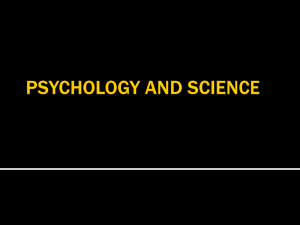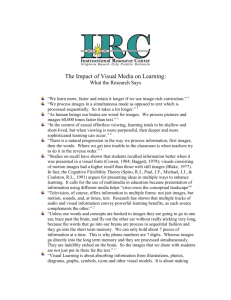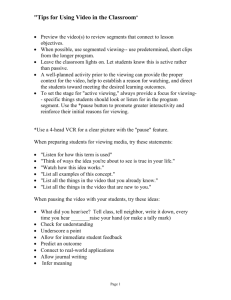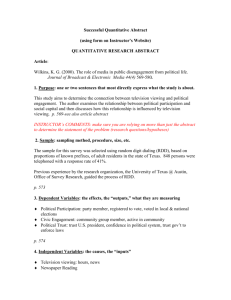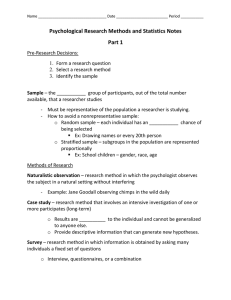Please review these notes – you will have a quiz question based on
advertisement
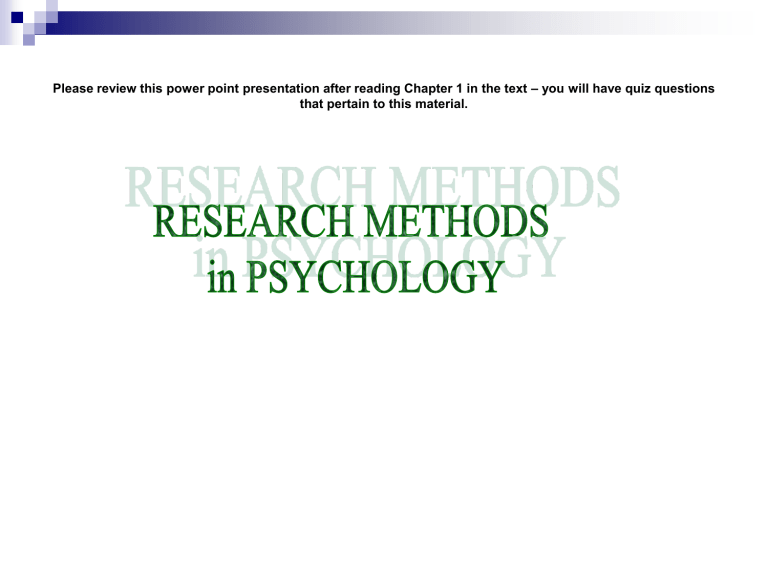
Please review this power point presentation after reading Chapter 1 in the text – you will have quiz questions that pertain to this material. Definitions Psychology: The scientific study of behavior and mental processes. Scientific Method: A set of assumptions, attitudes and procedures that guide researchers in creating questions to investigate, in generating evidence and in drawing conclusions. Empirical Evidence: Evidence that is based upon objective observatio, measurement, and/or experimentation. Hypothesis: A tentative statement about the relationship between two or more variables. (Educated guess) Variable: A factor that can vary, or change, in ways that can be observed, measured, and verified. Operational Definition: A precise description of how the variables in a study will be manipulated or measured. Replicate: To repeat or duplicate a scientific study in order to increase confidence in the validity of the original findings. Theory: A tentative explanation that tries to integrate and account for the relationship among behaviors and events. Scientific Method Steps 1. 2. 3. 4. Formulate a specific question that can be tested. Design a study to collect relevant data. Analyze the data to arrive at conclusions. Report the results. (Read pages 14 – 19 in the text) Descriptive Research Methods Naturalistic Observation involves the observation and recording of behaviors in a natural setting. This can be used in observing behaviors that can not be replicated in a laboratory. Consider this: Would a researcher be able to ethically study bullying in a laboratory by causing an innocent person to become bullied? Descriptive Research Methods Cont … Case Studies are intensive, in-depth investigations of an individual or a small group of individuals. This involves the compilation of a great deal of information about the individual(s), often from multiple sources. This type of study can be used to investigate rare or unusual circumstances. Consider this: Would a researcher be able to ask a volunteer to undergo brain damage in order to study various regions of the brain? Would you volunteer? If you were studying this topic, how would you choose your participants in the study? Descriptive Research Methods Cont … In a survey, people respond to a structured set of questions about their experiences, beliefs, behaviors or attitudes. An advantage of this type of research is that information can be gathered easily from a much larger group of people. Terms: - Sample: a segment of the larger group or population. - Representative sample: closely parallels the larger population being studied on relevant characteristics. - Random selection: subjects are selected randomly; every group member has an equal chance of being selected. Descriptive Research Methods Cont … Correlational studies examine how strongly two variables are related to, or associated with each other. Positive Correlation: two factors vary systematically in the same direction, increasing or decreasing together. Example: More ice cream cones are sold on hot days OR fewer ice creams cones are sold on colder days (correlation between ice creams cones sold and temperature). Negative Correlation: two factors vary systematically in opposite directions, one increasing as the other decreases. Example: daily amount of television viewing and grades. It may be found that the more television viewing a child has the lower the grades in school. (Television viewing up, grades down / or the opposite, television viewing down, grades go up). CORRELATION DOES NOT MEAN CAUSALITY – the hot weather did NOT make people buy ice cream cones and the television did NOT make grades suffer. (Could it be that perhaps with the increased television viewing, the children did not have as much time to study or perhaps they had parents who weren’t as involved with making sure homework was completed every day before watching TV?) The Experimental Method TERMS Experimental Method: a method of investigation used to demonstrate causeand-effect relationships by purposefully manipulating one factor thought to produce change in another factor. Independent Variable: The purposely manipulated factor thought to produce change in an experiment; also called the “treatment of interest.” Dependent Variable: The factor that is observed and measured for change in an experiment; thought to be influenced by the independent variable. Random Assignment: The process of assigning participants to experimental conditions so that all participants have an equal chance of being assigned to any of the conditions or groups in the study. Experimental Group or Experimental Condition: In an experiment, the group of participants who are exposed to all experimental conditions, including the independent variable or treatment of interest. Control Group or Control Condition: In an experiment, the group of participants who are exposed to all experimental conditions, except the independent variable; the group against which changes in the experimental group are compared. Apply What You Have Learned Brief synopsis of an experiment: A researcher believes that learning a memory strategy called “chunking” will result in individuals being able to remember more numbers in a random string of numbers given to them to study. One group will be taught the memory strategy, the second group will not be taught the memory strategy. Every individual in each group will be tested for how many numbers they can recall after being given five minutes to study. Questions: 1. Which group is the control group? 2. Which group is the experimental group? 3. What is the independent variable? 4. What is the dependent variable? Answers on the next page Answers 1. 2. 3. 4. The control group is the group that did NOT learn the memory strategy “chunking.” The experimental group is the group that learned the memory strategy. The independent variable is the memory strategy (remember the independent variable is the variable that is thought to produce a change) The dependent variable is the score on the memory test (influenced by the independent variable). Variations In Experimental Design TERMS: Placebo: An inert substance or a treatment that has no known effects. For example, in an experiment that is testing how effective a new pain killer is, one group may receive a “sugar pill” (a placebo) which should have no effect in reducing pain. Researchers can then see if there is an expectancy effect. Placebo Control Group: A control group in which the participants are exposed to a fake independent variable, or placebo. The effects of the placebo are compared to the effects of the actual independent variable on the experimental group. Expectancy Effects: Changes in a subject’s behavior produced by the subject’s belief that change should happen; also called placebo effects. (For example, those who took the sugar pill reported claims of having reduced pain because they thought they were taking the real pain killer). Double-Blind Study: Experimental technique in which neither the participants nor the researcher interacting with the participants is aware of the group or condition to which the participants have been assigned. Demand Characteristics: In a research study, subtle cues or signals expressed by the researcher that communicate the kind of response or behavior that is expected from the participant.



